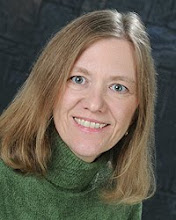I’m getting nervous about my last two challenges. Time is growing short. Some of the back-to-the-classics challenge books are optional, but I still have to read my required pre-18th century or 18
th century choice-
The Odyssey. Unfortunately, my son has to read it for school, so he has first dibs on the book. Why didn’t I read that one first?
In the meantime, I decided to read my choice for classic short stories:
Nikolai Gogol- The Collected Stories. I bought this collection about four years ago (after reading
The Namesake by Jhumpa Lahiri which mentioned Gogol’s
The Overcoat prominently). But it’s been collecting dust. I’m not much one for short stories.
Gogol is a Ukranian-born Russian writer who lived in the early 1800s. I’m no student of Russian literature, so all I’ve learned about him is taken from the book’s introduction. His earlier stories are influenced by Ukranian folklore and the later stories are more sophisticated but absurd. He had a great deal of influence over other Russian writers. None of this intro prepared me to love this book as much as I did.
What are these stories? Possibly the best known are
The Nose;
The Overcoat; and maybe
The Madman’s Diary, which were included in this collection. His earlier books were
Evenings on a Farm near Dikanka, Vols I and II, and included in this collection from those books were
St. John’s Eve and
Christmas Eve. There were a total of thirteen stories in the collection, a mixture of earlier and later stories. And they were all captivating. There were similarities in them, but there was a difference in tone between the earlier stories and the later ones. Actually, I enjoyed the earlier ones more.
The "folklore-ish" tales were conversational in style. And even though the narrator wandered around in tangents, he was a fantastic storyteller, always drawing me in with the wild details. There were witches and devils galore, so maybe it was a kind of magical realism, but it was like nothing I’ve read before. Not so much scary as matter-of-fact, as though how do you live with these things if these things are real, and they scare you, but you go on with your life because they are part of life.
The middle portion of the book had stories that were vignettes of Russian countryfolk’s lives, humorously and sadly portrayed. One story that I thought was brilliantly done started with a chatty narrator complaining about his memory being like a sieve. He heard a wonderful story from a great storyteller, so he insisted the man write the story down. Awhile later, he noticed that his wife had used some of the pages to wrap cakes. So- if you want to know the ending of the story, you have to find the storyteller. The narrator gives great detail on where to locate the storyteller and how to recognize him. Then he launches into the story. It’s a detailed and increasingly interesting little family drama. I KNOW that the ending of the story is going to be lopped off. Nevertheless, I continue reading. I get sucked in to the dilemma. I want to know how the conflict is going to be resolved. And when the tale ends abruptly, leaving me hanging, I have no one to blame but myself. Who would DO that to a reader?
The Overcoat is the last story in the collection. It’s a sad story about a downtrodden clerk, content-even happy- in his job, but poor. It comes to pass that he needs a new coat. He scrimps and saves and plots with a tailor friend to have a new coat made. The thrill of the new coat becomes the focus of his life and when it is finally finished, it opens a whole new world of possibilities for him. Except that the first evening he wears it, the coat is stolen. When he attempts to seek help from the authorities, he is ignored and ridiculed. He sickens and dies. His ghost takes a sort of muted revenge. The bare bones outline doesn’t do the story justice. Gogol’s writing is able to wring every last bit of feeling from it.
I’d love to read the stories again in an annotated version to help extract more of the meaning from them, because I was reading quickly just to enjoy the stories and the beauty of the words on the page. But I’m sure there are layers upon layers in there. One of these days, when I’m not running in so many different directions, I’m going to pull Gogol back down from my shelf.
You can check out all the classics being read by many different bloggers at the back-to-the-classics challenge hosted by
Sarah Reads Too Much.






















